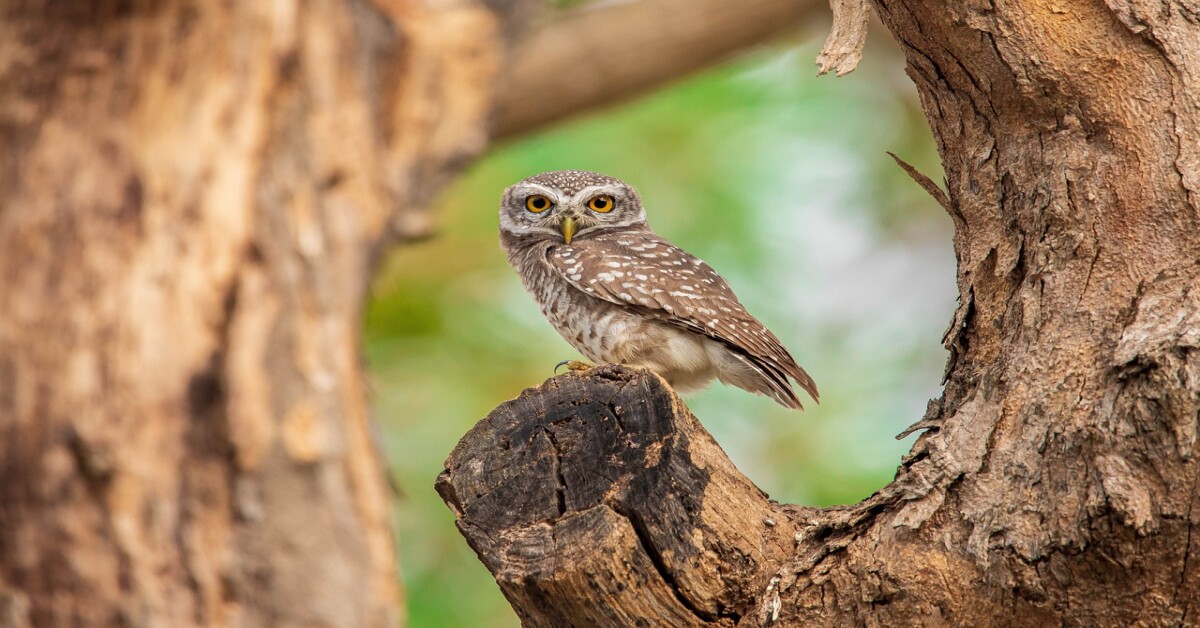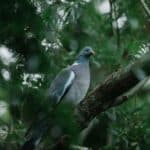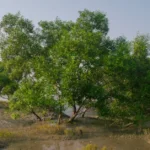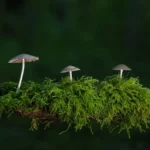Our planet shelters over 10,000 bird species, from the iconic Bald Eagle to delicate hummingbirds. Tragically, many face extinctions. As climate change and human activities impact wildlife, this article unveils 13 endangered species of birds, classified as endangered by the IUCN.
From the majestic California Condor to the elusive Forest Owlet, these avian wonders urgently need conservation efforts to prevent their extinction.
Deforestation and global warming threaten their existence, emphasizing the critical importance of preserving these endangered species for the health and balance of our ecosystems.
Importance of Birds
Birds play a crucial role in maintaining ecological balance and biodiversity, making them indispensable to our planet’s health. One primary significance lies in their role as natural pest controllers.
Many bird species, such as swallows and sparrows, feed on insects that could otherwise become agricultural pests. By keeping insect populations in check, birds contribute to sustainable farming practices, reducing the need for chemical pesticides.
Additionally, birds play a vital role in seed dispersal and plant pollination. As they forage for food, birds inadvertently transport seeds to new locations, aiding in the regeneration of forests and other plant communities.
Unfortunately, despite their vital ecological roles, many species of birds face the threat of extinction due to various factors. Habitat destruction, climate change, pollution, and illegal wildlife trade are among the leading causes jeopardizing the survival of numerous bird species.
Endangered Species of Birds
Endangered bird species face many threats, such as habitat loss and climate change. Birds like the Philippine Eagle and the Kakapo are critically endangered.
Conservation efforts aim to protect their habitats and prevent extinction. Public awareness and support for these initiatives are crucial to saving these unique birds from disappearing forever.
Here is a list of 13endangered species of bird currently facing the threat of extinction.
Kakapo (Strigops habroptilus)
The Kakapo (Strigops habroptilus), also known as the night parrot or owl parrot, is a critically endangered bird native to New Zealand. Once widespread, its population has dwindled to around 200 individuals, making it one of the rarest parrot species globally.
The Kakapo is a nocturnal, flightless bird with a distinctive moss-green plumage, adapted for life on the forest floor. The primary threats to its survival include habitat loss, predation by introduced species like rats and cats, and low reproductive rates.
Conservation efforts, including habitat protection and predator control, aim to reverse the decline of this unique and endangered avian species.
Great Indian Bustard (Ardeotis nigriceps)
The Great Indian Bustard (Ardeotis nigriceps) is critically endangered and primarily found in India. The bird is one-meter-tall and weighing about 15 kg. Its population has sharply declined to around 150 individuals due to habitat loss, hunting, and agricultural expansion.
This majestic bird inhabits arid and semi-arid regions, favoring grasslands and open landscapes.
One notable sanctuary where the Great Indian Bustard can be found is the Desert National Park in Rajasthan, India. This protected area serves as a crucial habitat for the bird, providing a refuge from the threats it faces in unprotected regions.
Conservation efforts in such sanctuaries play a vital role in preserving the remaining population of this critically endangered species.
Javan Hawk-Eagle (Nisaetus bartelsi)
The Javan Hawk-Eagle (Nisaetus bartelsi) is an endangered bird species native to the islands of Java, Bali, and Sumatra in Indonesia. Recognizable by its striking appearance, it features a distinctive black and white plumage with vivid yellow legs and cere.
This medium-sized raptor prefers dense tropical forests, where it hunts various prey, including birds and small mammals.
The International Union for Conservation of Nature (IUCN) classifies the Javan Hawk-Eagle as endangered due to habitat loss and degradation. Deforestation and illegal pet trade pose significant threats to its population.
Conservation efforts focus on protecting its remaining habitats and raising awareness about the importance of preserving the unique biodiversity of Indonesia’s tropical forests.
Also Read: Biodiversity Hotspots in India- Significance and Conservation
Indian Vulture (Gyps indicus)
The Indian Vulture (Gyps indicus) is a critically endangered bird species primarily found in India. Identified by its bald head and neck, these large scavengers play a vital role in the ecosystem by cleaning up carrion.
However, their population has declined drastically, mainly due to the use of diclofenac, a veterinary drug toxic to vultures. This has led to a significant conservation concern.
The International Union for Conservation of Nature (IUCN) designates the Indian Vulture as critically endangered.
To address this issue, conservation efforts have been initiated, including the establishment of the Jatayu Conservation and Breeding Centre in Pinjore, Haryana, India. This sanctuary aims to breed and rehabilitate vultures, contributing to the overall preservation of this crucial species.
Sumatran Ground Cuckoo (Carpococcyx radiceus)
The Sumatran Ground Cuckoo (Carpococcyx radiceus) is a critically endangered bird species native to the island of Sumatra in Indonesia. With its distinctive appearance, it features a brownish-black plumage and a striking blue facial patch.
This elusive bird primarily resides in the dense lowland rainforests, where it forages on the forest floor for insects and small invertebrates.
The International Union for Conservation of Nature (IUCN) classifies the Sumatran Ground Cuckoo as critically endangered due to habitat loss and fragmentation.
While specific sanctuaries for this particular species might not be well-documented, the overall conservation of Sumatra’s rainforests remains crucial for their survival. Preserving these habitats is essential to maintaining biodiversity and ensuring the continued existence of the Sumatran Ground Cuckoo.
California Condor (Gymnogyps californianus)
The California Condor (Gymnogyps californianus) is an endangered bird species native to the western United States, specifically California, Arizona, and Utah. Recognized for its impressive size and appearance, it boasts a wingspan of up to 9.8 feet, making it the largest land bird in North America.
With striking black plumage and distinctive white markings on its wings, the California Condor is an iconic symbol of the American wilderness.
These majestic birds primarily inhabit rugged mountainous terrain and coastal areas, favoring cliffs and caves for nesting. The California Condor faced near-extinction in the late 20th century due to lead poisoning and habitat destruction.
Conservation efforts, including captive breeding programs and habitat protection, aim to revive their dwindling population and secure the survival of this magnificent species.
Spoon-billed Sandpiper (Calidris pygmaea)
The Spoon-billed Sandpiper (Calidris pygmaea) is a critically endangered bird species primarily found in the coastal areas of East Asia, particularly during its breeding season in northeastern Russia.
Distinguished by its unique spatula-shaped bill, this small wader migrates along the East Asian-Australasian Flyway, facing threats from habitat loss and climate change.
Its preferred living habitat includes mudflats, estuaries, and coastal wetlands, where it forages for invertebrates. The International Union for Conservation of Nature (IUCN) classifies the Spoon-billed Sandpiper as critically endangered due to a sharp decline in its population.
Conservation efforts focus on preserving critical stopover sites along its migration route, highlighting the importance of international collaboration to safeguard the Spoon-billed Sandpiper’s precarious existence.
Siberian Crane (Leucogeranus leucogeranus)
The Siberian Crane (Leucogeranus leucogeranus) is a critically endangered bird species with its primary breeding grounds in northern Russia and nesting areas in the Arctic tundra.
Recognizable by its striking white plumage, black primary feathers, and a distinctive red patch on its face, this majestic bird stands at about five feet tall, making it one of the world’s tallest flying birds.
Siberian Cranes inhabit wetlands, marshes, and shallow lakes during their migration across Asia, including stopovers in countries like China and Iran.
Threats to their population include habitat loss, climate change, and poaching. Conservation initiatives aim to protect crucial breeding and stopover sites, emphasizing the need for international cooperation to ensure the survival of the Siberian Crane.
Forest Owlet (Heteroglaux blewitti)
The Forest Owlet (Heteroglaux blewitti) is a critically endangered bird species once thought to be extinct until its rediscovery in 1997 in the Satpura range of central India.
Recognized by its brown plumage, large size, and distinctive facial disc, this elusive owl inhabits dense, deciduous forests.
The living habitat of the Forest Owlet includes dense, lowland forests, often near water bodies, where it preys on small mammals and birds.
Unfortunately, due to habitat destruction and limited sightings, the current population status remains uncertain, with only a handful of confirmed records. Conservation efforts focus on protecting its habitat and conducting surveys to understand and conserve this rare and enigmatic bird.
Philippine Cockatoo (Cacatua haematuropygia)
The Philippine Cockatoo (Cacatua haematuropygia) is a critically endangered bird native to the Philippines. Recognized by its striking white plumage and vibrant red and yellow feathers on its head, this medium-sized parrot stands out for its distinctive appearance.
Found in a variety of habitats, including forests, mangroves, and coastal areas, the Philippine Cockatoo relies on these diverse environments for feeding and breeding.
As of the latest available data, the population of the Philippine Cockatoo is estimated to be around 400 individuals. However, reliable information on its exact numbers is challenging due to the bird’s elusive nature and remote habitats.
Conservation efforts focus on habitat protection, community engagement, and breeding programs to ensure the survival of this critically endangered species.
Northern Bald Ibis (Geronticus eremita)
The Northern Bald Ibis (Geronticus eremita) is a critically endangered bird species primarily found in semi-arid and rocky landscapes of North Africa, the Middle East, and parts of Europe.
Characterized by its distinctive bald, red face and long, curved bill, this medium-sized ibis is known for its unique appearance. Its living habitat includes cliffs, rocky areas, and open fields where it forages for small invertebrates.
The International Union for Conservation of Nature (IUCN) classifies the Northern Bald Ibis as critically endangered, with only a few hundred individuals remaining in the wild. The threats to its population include habitat loss, disturbance at breeding sites, and hunting.
Conservation efforts involve habitat restoration, captive breeding programs, and community engagement to protect and preserve the remaining populations of this iconic bird.
Philippine Eagle (Pithecophaga jefferyi)
The Philippine Eagle (Pithecophaga jefferyi) is a critically endangered bird native to the Philippines, particularly in Luzon, Leyte, Samar, and Mindanao. Recognized by its majestic appearance, it is one of the world’s largest eagles with a wingspan of about 2.2 meters.
The Philippine Eagle resides in dense tropical forests and is known for its distinctive appearance, featuring striking blue eyes, a prominent crest of feathers, and a robust, powerful build.
This endangered species is under serious threat due to habitat destruction, hunting, and fragmentation. With a length of about one meter and a weight ranging from 4.5 to 8 kilograms, the Philippine Eagle relies on large expanses of undisturbed forests for hunting and breeding.
Conservation efforts are crucial to preserving its remaining habitats and ensuring the survival of this iconic and highly endangered species.
Yellow-eyed Penguin (Megadyptes antipodes)
The Yellow-eyed Penguin (Megadyptes antipodes) is an endangered species native to New Zealand, particularly found along the country’s southeast coast and several offshore islands.
Distinguished by its striking yellow eye band, this penguin species is one of the rarest globally. It inhabits coastal forests and beaches, preferring undisturbed areas for breeding and nesting.
The International Union for Conservation of Nature (IUCN) classifies the Yellow-eyed Penguin as endangered due to habitat degradation, introduced predators, and human disturbance.
Conservation efforts focus on protecting their nesting sites, controlling predators, and raising awareness about the importance of preserving the coastal habitats essential for the survival of this unique and vulnerable penguin species.
Human Responsibilities and Conservation Projects
Preserving endangered species of birds requires collective human responsibility. Habitat destruction, climate change, and illegal activities pose significant threats. Individuals can contribute by supporting conservation organizations, avoiding products contributing to habitat destruction, and promoting responsible tourism.
Education on sustainable practices fosters awareness, empowering communities to protect bird habitats. Responsible waste disposal and reducing plastic use further safeguard ecosystems. Human actions, both locally and globally, impact bird species, emphasizing the need for ethical choices to ensure their survival.
Globally, numerous projects are dedicated to the conservation of endangered bird species. One such example is the ‘Spoon-billed Sandpiper Task Force,’ an international initiative aimed at preserving the habitat and addressing threats faced by the critically endangered Spoon-billed Sandpiper during its migratory routes.
In India, the ‘Vulture Conservation Breeding Programme’ focuses on the recovery of critically endangered vulture populations by addressing threats like the veterinary drug diclofenac.
Additionally, the ‘Great Indian Bustard Project’ in India emphasizes habitat conservation and community engagement to safeguard the critically endangered Great Indian Bustard.
These projects exemplify the international and local efforts crucial for the protection and conservation of endangered bird species.
Conclusion
The mentioned endangered species of birds face imminent threats that challenge their existence. These feathered inhabitants, with their unique characteristics and roles in diverse ecosystems, are dwindling due to habitat loss, climate change, and human activities.
As we witness their populations decline, the urgency to safeguard their habitats and address the root causes of their endangerment becomes increasingly apparent.
Conservation efforts play a pivotal role in mitigating the risks faced by endangered birds. Initiatives such as the ‘Vulture Conservation Breeding Programme’ in India and international projects like the ‘Spoon-billed Sandpiper Task Force’ demonstrate collaborative efforts to protect specific species and their habitats.
Human duties extend beyond conservation efforts to encompass responsible practices. Avoiding activities that contribute to habitat destruction, supporting conservation organizations, and promoting ethical tourism are steps individuals can take.






